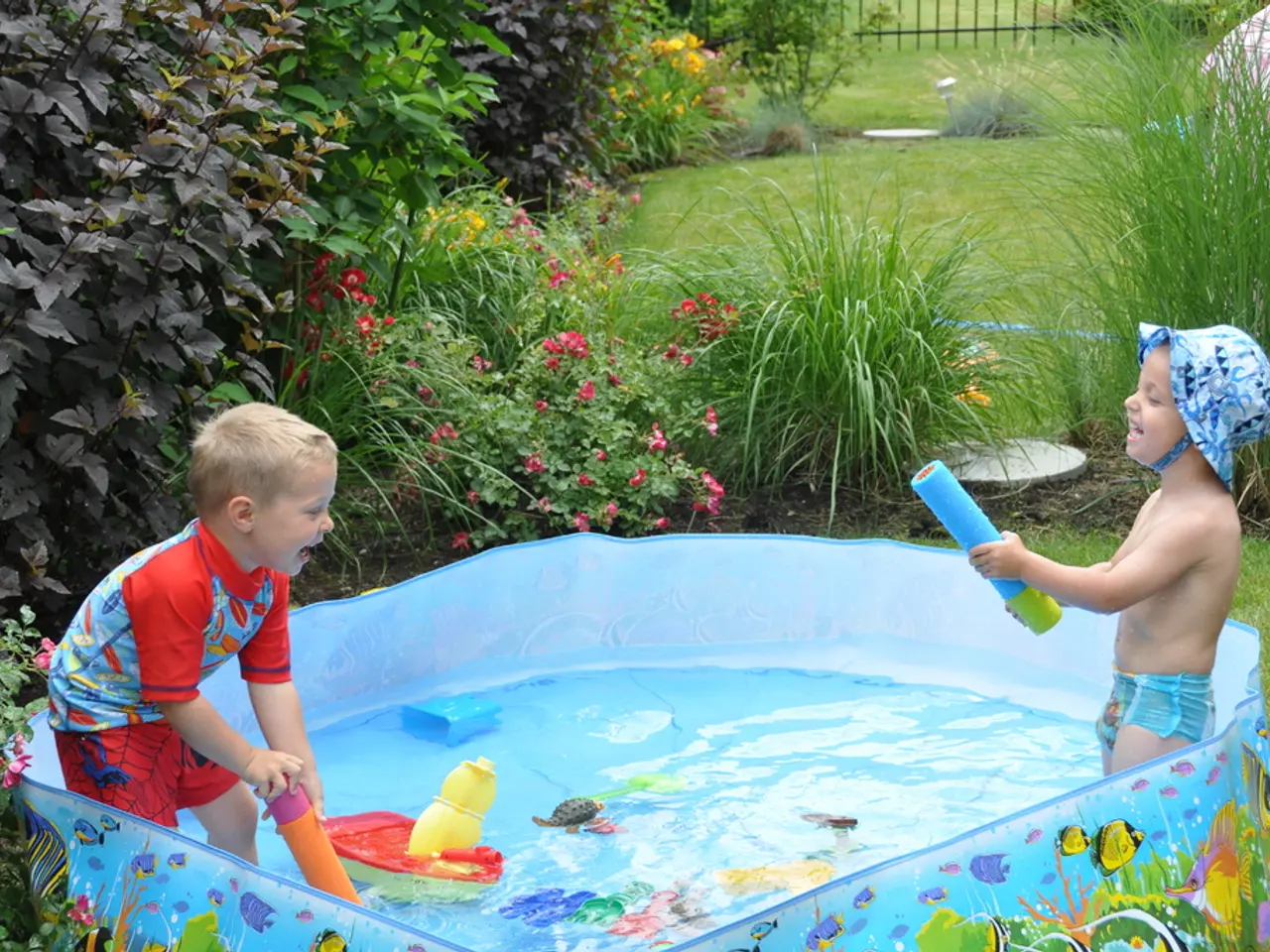Top Ten Sensory Experiences Tailored for Child Development
Discover some fun and enlightening activities designed to stimulate the senses of preschoolers and young children. These activities are not only entertaining but also help develop their sensory perception and early scientific thinking.
Touch
Encourage tactile exploration with activities such as the "Kleenex box senses station," where children place their hands inside a box (with eyes closed) to feel and guess different textures like soft cotton, rough sandpaper, or smooth plastic. Sensory bins filled with natural elements, such as dirt, leaves, and pinecones, allow for exploration of varied textures and fine motor skill development.
Sight
Incorporate observation activities like nature walks, scavenger hunts, or flashcards to enhance children's visual acuity. These activities encourage kids to examine shapes, colours, and sizes, and to describe what they see.
Hearing
Provide sound-making instruments or create a water xylophone to help children differentiate sounds and identify natural noises like birds or wind. The "Nature’s Symphony Walk" focuses on listening attentively to outdoor sounds like rustling leaves or bird calls.
Smell
Use "smell bottles" containing familiar spices, herbs, or dried fruits for children to sniff and guess. Try "homemade scratch and sniff" art by sprinkling gelatin over glue on paper, or do scent-based sensory play with scented playdough, markers, or paints. Scent guessing games inside sealed boxes are also engaging.
Taste
Blindfold children and have them taste various foods to identify flavours and explore the connection between smell and taste. Incorporate tasting time during sensory story reading when a food is mentioned to create an immersive learning experience.
Multi-Sensory Activities
Activities such as the "Mystery Box Exploration" where kids use all senses to identify a hidden object by touch, smell, and even sound, help build scientific observation and deductive reasoning skills. STEM-related sensory experiments like floating/sinking objects in water, planting seeds, or watching a rainbow lava lamp can further enhance sensory learning through curiosity and discovery.
These activities are tailored to various settings, including home, classroom, or outdoor play. They help children learn about sight, sound, smell, touch, and taste and identify the body parts responsible for these senses. Sensory play also aids in developing coordination, improving concentration, and developing fine and gross motor skills. It also widens their imagination, creative thinking, and the ability to solve problems and experiment with solutions.
Some additional activities include the "Scratch and Sniff" activity, where a child's name is written on cardstock, traced over with glue, and sprinkled with flavored gelatin to create a scented name board. The "Sound Matching" activity for preschool and kindergarten children involves filling plastic eggs with different items (like dry beans, bells, pennies, rice, or broken crayons) and having children match the eggs by their sound. The "Texture Tray Sensory Play" activity involves providing children with a divided tray filled with different materials (like cotton, wool, thread, fabric, shiny paper, non-slip foam, sandpaper, felt) to touch and explore.
For a more scientific approach, consider the "Smelly painting" activity, where artificial flavours are added to paint and children paint and decipher the smell. Fill a divided tray with different textures for children to touch and explore. Add food coloring to water-filled vases and place celery stalks into them for a science experiment.
These activities are thematic units for preschoolers and kids, helping them build their ability throughout kindergarten and junior school. Embrace the opportunity to explore, learn, and grow through these engaging and educational activities.
- Incorporate parenting practices centered around sensory activities, providing a fun and enlightening lifestyle not only for children but also for parents.
- To further enhance the learning experience, consider incorporating fashion-and-beauty elements, such as creating homemade scented playdough or paints.
- For families with pets, encourage pet-themed sensory exploration through textures like fur, nails, and slime made from pet-safe ingredients.
- food-and-drink can play a role in sensory activities as well, offering opportunities to explore different tastes and textures during meals or sensory story time.
- Home-and-garden projects can offer sensory-rich activities like planting seeds, creating DIY herb gardens, or sculpting clay pots to stimulate children's creativity and dexterity.
- Include travel as part of the sensory learning journey by visiting museums, zoos, or botanical gardens, taking advantage of new sights, sounds, and experiences to broaden children's worldview and stimulate their personal-growth.




